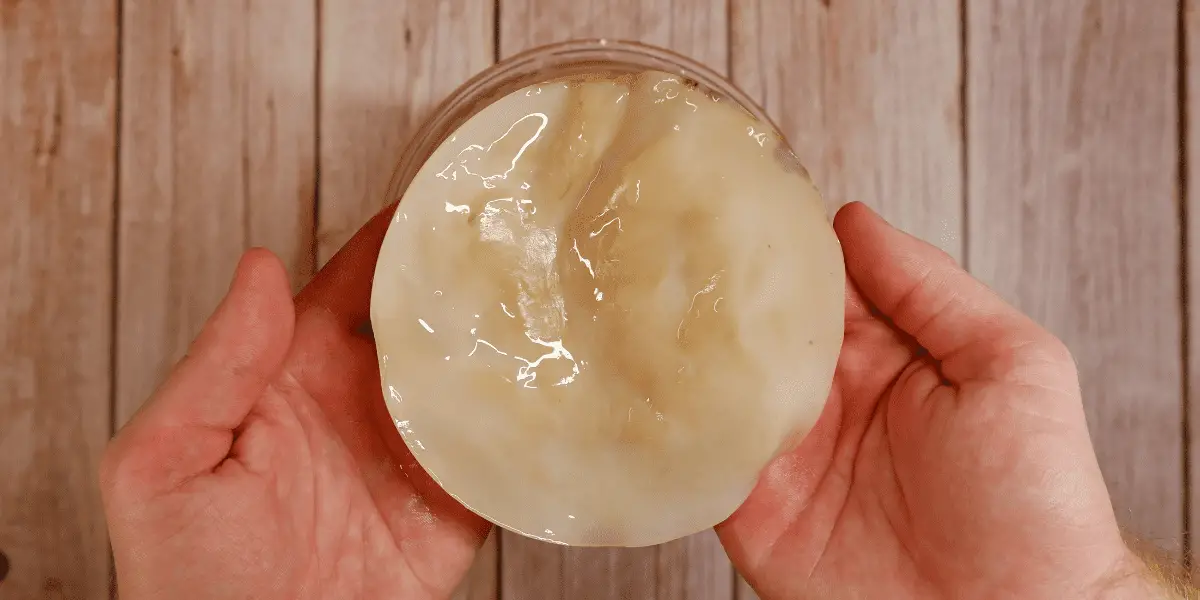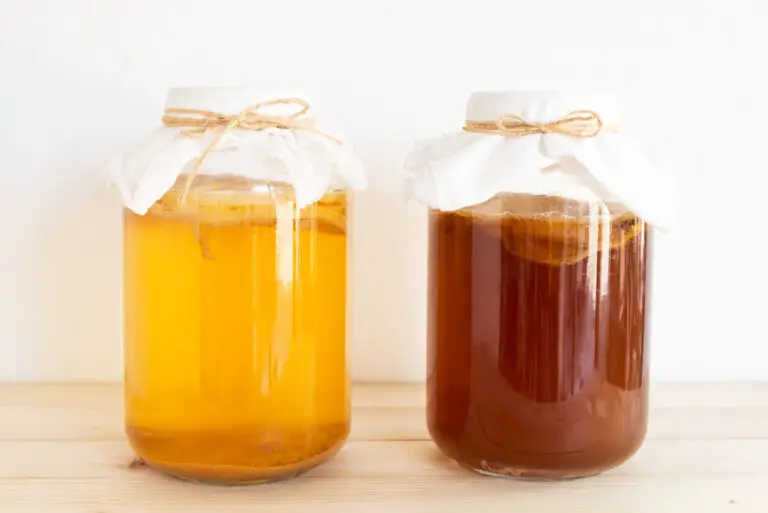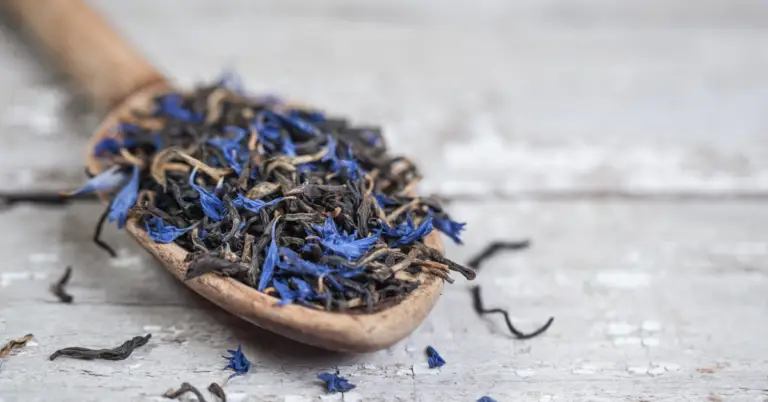What Can Go Wrong When Brewing Kombucha, And How to Fix It!
Making kombucha at home can be an enjoyable and fulfilling activity. Still, there are a few things that can go wrong during the fermentation process. Here are the nine main problems that you may encounter when brewing kombucha and how to troubleshoot and prevent them:
Vinegar Flies or Fruit Flies on My Kombucha
Vinegar flies, also known as fruit flies or Drosophila melanogaster, are small, winged insects commonly found near fermented or overripe fruits and vegetables. They are about 1/8 inch long and have red eyes and a tan or light brown body. They are attracted to the sugars and other organic matter found in these materials and lay their eggs in them. These small flies and their larvae feed on the yeasts in the kombucha, leaving holes and trails on the surface of the SCOBY.
If you notice vinegar flies in your environment, you must act quickly to prevent them from contaminating your kombucha. Set traps for the flies, and ensure you cover the kombucha jar with a breathable cloth to prevent vinegar flies from infesting your ferment. This will allow air to flow through while keeping flies out. If you want to know more about this topic, check out this article! If you do notice vinegar flies in your ferment, it’s best to discard the kombucha and start over.
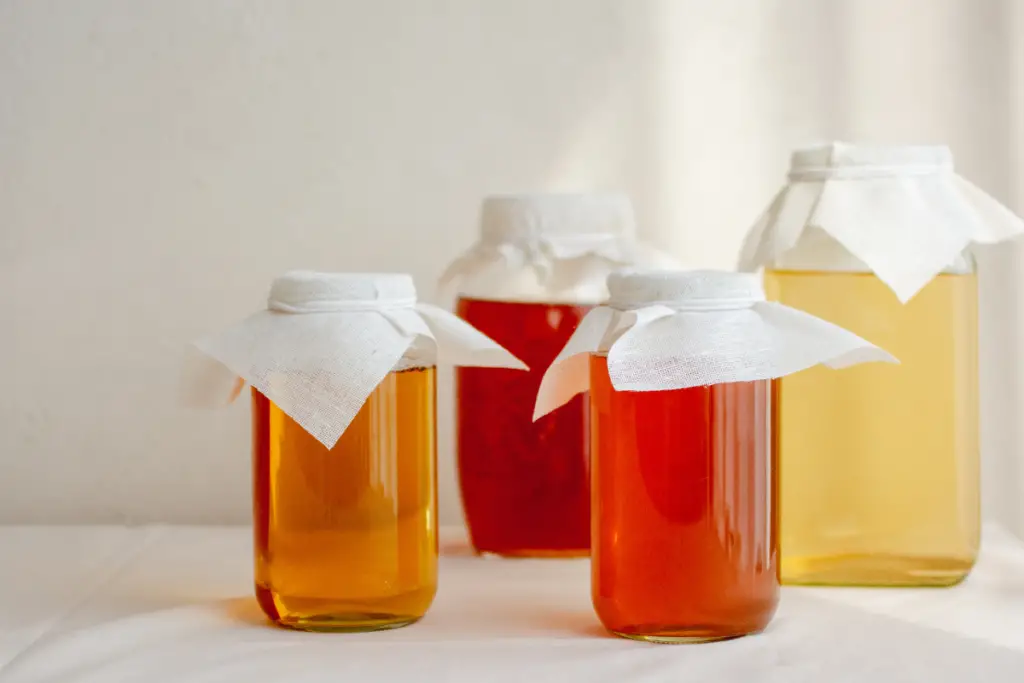
Vinegar Eels on Kombucha
Turbatrix aceti, also known as the acetic acid earthworm or vinegar eel, is a microscopic worm often found in vinegar. Vinegar eels are small, slender worms typically less than 1 millimetre in length. It is transparent or white and has a smooth, cylindrical body. These tiny worms can sometimes infest kombucha during fermentation. These worms feed on the bacteria and yeast in the SCOBY, causing it to peel and fall apart.
Vinegar eels are not harmful to humans and do not pose any health risks, but they can ruin the flavour and appearance of the kombucha. They can also be challenging to get rid of, as they reproduce quickly and can be hard to remove from the liquid. It’s essential to keep your brewing equipment clean and sterilised to prevent vinegar eels from infesting your kombucha.
If you notice vinegar eels in your kombucha, it’s best to discard the entire contents of the jar or give it to someone with an aquarium, as the eels can be used to feed fish.
Mould in My Kombucha
Mould can be a common problem when brewing kombucha. It can be difficult to distinguish from the SCOBY in the early stages of fermentation, so it’s essential to be vigilant and check for any unusual growth.
Here is a good tutorial with pictures on identifying mould from Kombucha Kamp.
If you notice mould on the surface of the SCOBY or in the liquid, it’s best to discard the kombucha and start over. To prevent mould from forming, make sure to keep your brewing equipment clean and sterilised, and store the jar in a cool, dry place.
Human Error When Making Kombucha
There are a few common mistakes that people make when brewing kombucha, and these can lead to problems with the fermentation process.
For example, if the tea is too hot when the SCOBY is added, it can kill the culture and result in a “dead” SCOBY. Additionally, if the SCOBY is not handled correctly or stored in the wrong conditions, it can become contaminated and produce poor-quality kombucha. To prevent these issues, follow the instructions for brewing kombucha carefully and handle the SCOBY with clean hands.
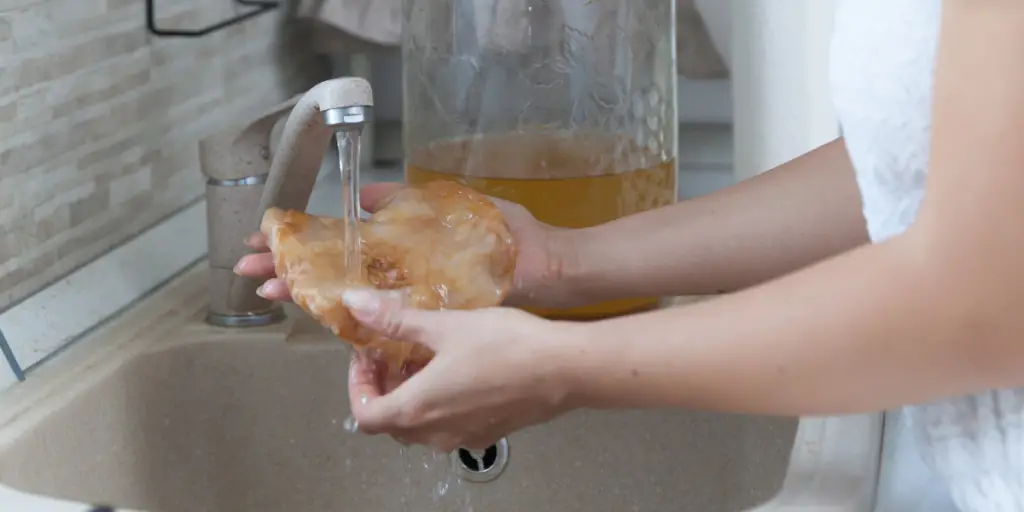
Bad Smell or Bad Taste
If your kombucha tastes or smells bad, it could be a sign of contamination or an issue with the fermentation process. It’s essential to pay attention to the appearance, smell, and taste of your kombucha, as these can all indicate potential problems. If you notice any off odours or flavours, it’s best to discard the kombucha and start over.
My Kombucha Tastes Like Vinegar
If your kombucha tastes too vinegary, it could mean that it has been fermented for too long. Kombucha is a fermented tea drink made by adding a SCOBY (symbiotic culture of bacteria and yeast) to a sweetened tea mixture. The SCOBY consumes the sugars in the tea, producing lactic acid and acetic acid, which give kombucha its characteristic sour and slightly vinegar-like flavour. However, if the kombucha is fermented for too long, the SCOBY may consume too much of the sugar in the tea, resulting in an overly vinegar-like flavour.
My SCOBY is Getting Brown
As the SCOBY ages, it may start to turn brown. This is normal and does not necessarily indicate a problem with the kombucha. However, if the SCOBY appears brown and slimy or has a strong, unpleasant odour, it may be a sign of contamination or an issue with the fermentation process. In these cases, it’s best to discard the kombucha and start over.
My Kombucha is Too Sour/Sweet/Tart
If your kombucha is too sour, sweet, or tart, it could mean that the fermentation process is not balanced. In this case, try adjusting the fermentation time for next time or adding a sweetener to balance out the flavour. For example, if your kombucha is too sour, you can try fermenting it for a shorter period or adding a sweetener such as honey or maple syrup to balance out the flavour. If your kombucha is too sweet, try fermenting it for a more extended period to allow the yeasts to consume more of the sugars.
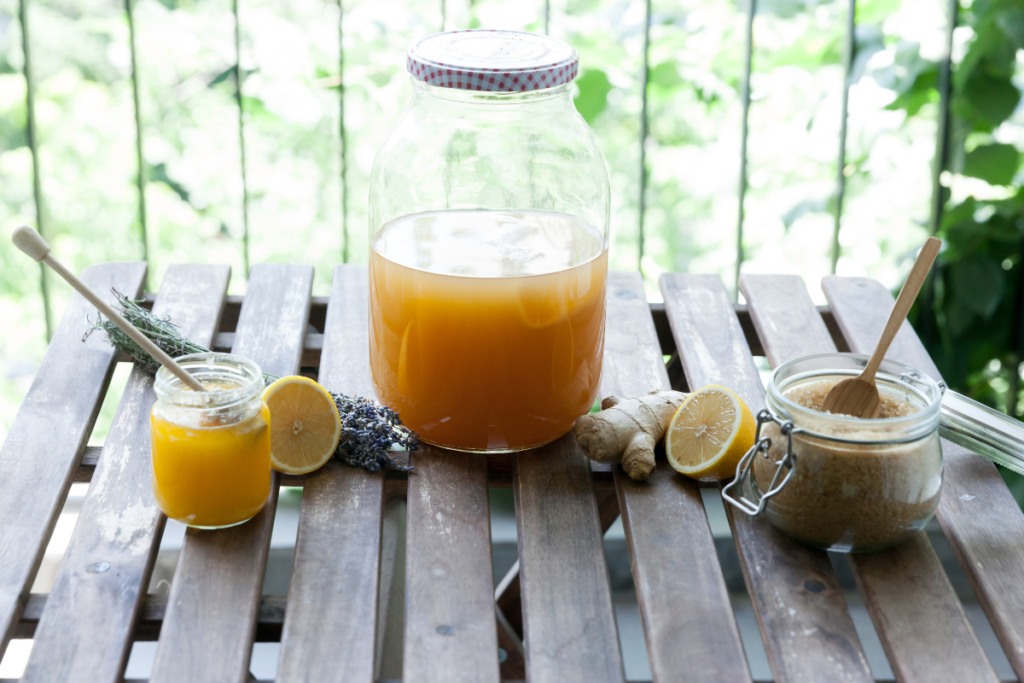
Remember, brewing kombucha is a trial-and-error process, and it’s normal to encounter problems from time to time. However, by being aware of these potential issues and knowing how to troubleshoot them, you can improve your chances of brewing a successful batch of kombucha. With practice and patience, you’ll be able to perfect your brewing skills and produce delicious, healthy kombucha that you and your family will love.

